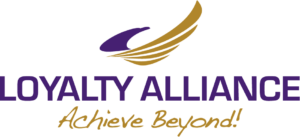I’m sure you’ve heard of “Lean Principles” in your industry or in your network of business associates. Lean is sometimes misunderstood, perceived incorrectly, or has a bad rap because of lackluster results (most often through poor implementation).
Lean is known and practiced in many manufacturing industries, but I find that many service organizations have not been exposed to the power of Lean.
If you are one of those manufacturing companies that knows and practices Lean – please don’t stop reading. I hope to give you valuable information that can improve your results. For those of you who know nothing about Lean, welcome to the first step of your Lean Journey – the learning stage.
What is “Lean”?
Historically, Lean (manufacturing) Principles originated in the US in the mid-1900’s by Edwards Deming and Joe Juran. While some US manufacturers implemented the ideas, most balked at the ideas and concepts that were being proposed. However, Japanese manufacturers recruited Deming, implemented the ideas, refined them, and rebuilt their manufacturing industry after WWII and quickly turned their country into a manufacturing powerhouse. After seeing what the Japanese were able to accomplish, US manufacturers took note and began to implement the ideas back at home.
To explain Lean in a nutshell, it is finding ways to work smarter, not harder, by eliminating waste, and continually improving the organization through people-based initiatives (not equipment-based initiatives). Sound logical? It is. Sound simple? Perhaps. Sound quick? Nope.
Lean is not a program, a fad, a trend, or a flavor of the month. It is a way of running your business. Organizations don’t “do Lean,” they “become Lean.”
Lean is 20% equipment and 80% people. Unfortunately, most companies on the Lean Journey spend 80% of their time on the equipment and 20% on the people.
On a side note, some companies use Lean as a way to downsize, making Lean synonymous with “losing jobs.” Successful Lean implementations do not start with downsizing because the people are needed to effect the improvements and changes. If the workforce shortage continues for the upcoming years, companies would be smart to let natural attrition do the workforce reduction and leverage the talent and skills that their people they have today as much as possible.
But back on the equipment topic, there is so much waste embedded in our companies and processes that you might never need new equipment and be successful with your Lean initiatives. Some Lean experts even venture a guess that 70% to 80% of our company processes are waste. 70% to 80%! That’s mind-boggling. To think that three quarters of what everybody does might contribute waste to the organization! But because we are so set in our ways and acceptant of these activities, we don’t see them as waste.
To give you a sense of what goes into creating a Lean environment, I’d like to go over the 11 areas of Lean.
#1: Having the Lean Mindset
Having a Lean Mindset means thinking about and believing in ideas such as: involving people in the change process, looking for incremental change, replacing reactive activities with proactive strategies, eliminating waste, focusing 80% of the time on people (not equipment), and having a passion for working smarter, not harder.
#2: Lean Leadership
Leadership and support are paramount for a successful Lean Journey. If the company leaders don’t become the ultimate role models for Lean, why should the employees jump on the Lean bandwagon?
#3: Understanding the Power of the Employees
Engaging employees in the change process, giving them the responsibility and accountability for making improvements or eliminating waste, and letting decisions be made at the lowest level possible are all key to Lean.
#4: Building Effective Teams
Empowered teams that have effective leaders can do remarkable things. There are countless examples of evidence to prove the power of teams. One recurring problem is that we don’t know how to build successful teams from the onset.
#5: Using Lean Tools
Using the “hard” Lean tools like 5S, Kaizen, and Value Stream Mapping is great. However, like all tools, you need to know all the tools in the toolbox and when/how to use each one.
#6: Providing a Clear Vision, Goals, and Direction
If there is no vision, there are no goals, people have no direction, and you have chaos. Everybody needs to be working toward the same goals and moving in the same direction in order to achieve maximum results.
#7: Reviewing and Revising Processes and Procedures
Processes are the backbones of companies and that is where we embed waste over and over. Making small, incremental changes to processes over time paves the Lean Journey road with successes and builds momentum toward better results.
#8: Effective Planning for Upcoming Changes
It’s funny how we say that we have no time to plan projects because we have this need to hurry up and get going to see results. However, when the projects don’t meet our expectations and we need to “regroup,” we have time to undo, fix, and redo our work. Planning is key in Lean, because doing rework is waste.
#9: Communication, Communication, Communication
In order to be a smooth-running organization, there must be two-way communication channels horizontally and vertically across the company. Communication is one of the biggest complaints of employees. It doesn’t happen naturally, ironically, so communication strategies need to be devised.
#10: Motivation, Recognition, and Reward
Having consistent results and successes while on your Lean Journey is hard work. There is no doubt about it. And because it is hard work, humans want to know that their hard work is being noticed and appreciated. Any Lean initiative can come to a screeching halt if employees don’t feel recognized, motivated, or feel that there is a reward to reap for their efforts. Another strategy to develop.
#11: Looking Beyond Your “Production” Area
Because your “production” area is where you put the majority of your expenses, that is the usual target for finding cost reductions and improvements. However, Lean organizations find Lean success everywhere, from the president’s office to the janitor’s closet.
As I stated earlier, you can’t “do” Lean. You become Lean over time. It is forever. It is both small and big improvements. It is the smart way to run a business.
To recap:
What is “Lean”?
- finding ways to work smarter, not harder
- eliminating waste
- continually improving the organization through people-based initiatives (not equipment-based initiatives)
- involving employees in the change process
- striving for incremental change, not radical change
- replacing reactive activities with proactive strategies
- spending 80% of the time on people-related initiatives and 20% on equipment-related initiatives
The 11 Pieces of the Lean Puzzle
#1: Having the Lean Mindset
#2: Lean Leadership
#3: Understanding the Power of the Employees
#4: Building Effective Teams
#5: Using Lean Tools
#6: Providing a Clear Vision, Goals, and Direction
#7: Reviewing and Revising Processes and Procedures
#8: Effective Planning for Upcoming Changes
#9: Communication, Communication, Communication
#10: Motivation, Recognition, and Reward
#11: Looking Beyond Your “Production” Area
I find that companies’ challenges (and resulting “failures”) during their Lean Journey revolve around the people management. In a future blog I’ll describe some tools and strategies for a successful Lean Implementation. In this blog series on Lean, I thought I’d next give insight on how a company, small or large, private or public, for-profit or not-for-profit, can get started on the Lean Journey. Much of it is getting into the proper mindset and effectively managing expectations.
- Nurturing Innovation Through Psychological Safety: A Journey with Conversation Frameworks - July 26, 2024
- Unveiling Diversity in Problem-Solving: A DEI Perspective on Conversation Frameworks - July 11, 2024
- Bridging Gaps and Building Solutions: The Unfolded Story of Innovative Management Tools - June 17, 2024

